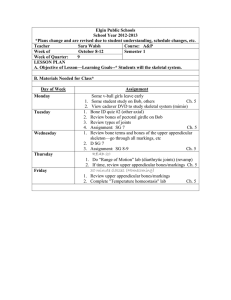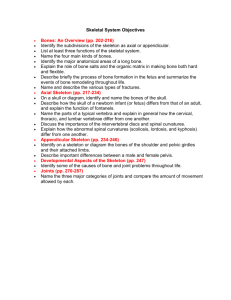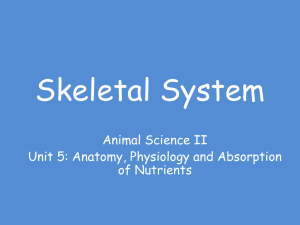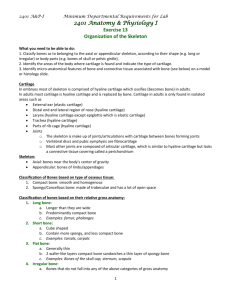File
advertisement
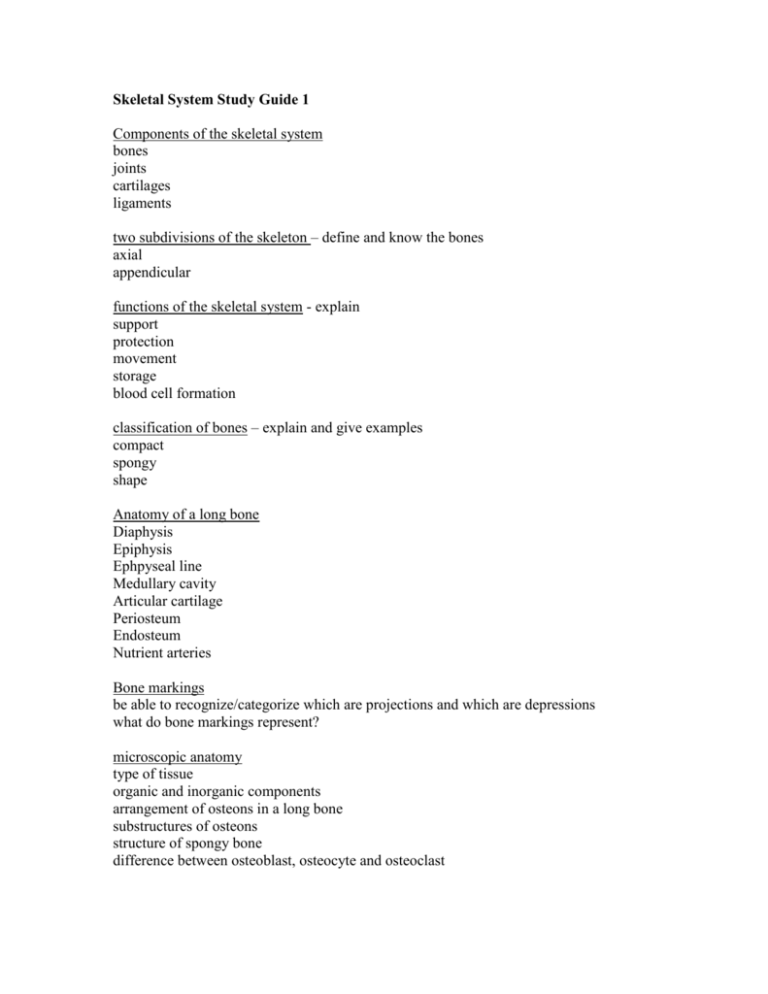
Skeletal System Study Guide 1 Components of the skeletal system bones joints cartilages ligaments two subdivisions of the skeleton – define and know the bones axial appendicular functions of the skeletal system - explain support protection movement storage blood cell formation classification of bones – explain and give examples compact spongy shape Anatomy of a long bone Diaphysis Epiphysis Ephpyseal line Medullary cavity Articular cartilage Periosteum Endosteum Nutrient arteries Bone markings be able to recognize/categorize which are projections and which are depressions what do bone markings represent? microscopic anatomy type of tissue organic and inorganic components arrangement of osteons in a long bone substructures of osteons structure of spongy bone difference between osteoblast, osteocyte and osteoclast Bone Formation, growth, remodeling Know the steps Difference between longitudinal and appositional growth Bone fractures Types of fractures Basic steps of repair Bones of the skeleton Know all names and whether they are axial or appendicular don't worry about naming all the bone markings unless specified do know which bones articulate with each other, and relative positions using language of anatomy Skull major bones of the skull know what a sinus is and function sutures and fontanels Spine regions of the spine curvatures of the spine abnormal curvatures of the spine intervertebral discs – where/what are they, what kind of tissue Thoracic cage Number of ribs Classification of ribs as true, false, floating Type of cartilage and purpose of cartilage Joints functional and structural classification types of synovial joints and their actions Homeostatic imbalances bursitis sprain arthritis gout osteoporosis
